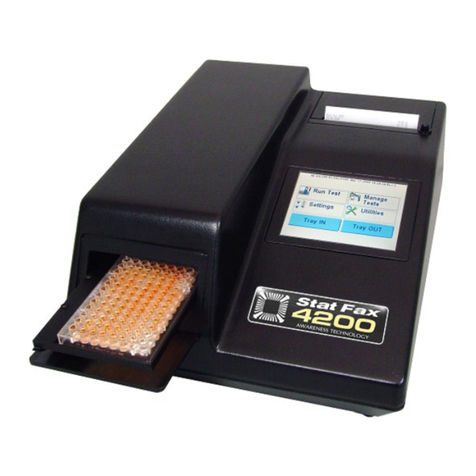
TABLE OF CONTENTS
1. Introduction ...................................................................................................... 1
1.1 Applications.............................................................................................................................. 1
1.1.1 Intended Use ..................................................................................................................... 1
1.1.2 Summary of the Instrument............................................................................................... 1
1.1.3 Principles of Operation ...................................................................................................... 2
1.2 Warning Markings Inscriptions d’avertissement ..................................................................... 3
1.2.1 Safety Symbols Le Symboles de Sûreté........................................................................... 3
1.2.2 Safety Terms Terminologie de Sûreté .............................................................................. 3
1.3 Safety Precautions ................................................................................................................... 4
1.4 Specifications ........................................................................................................................... 6
1.5 Installation ................................................................................................................................ 8
1.5.1 General.............................................................................................................................. 8
1.5.2 Installation/Preparation...................................................................................................... 9
1.5.3 Touch Screen Description ............................................................................................... 10
1.5.4 Load Paper ...................................................................................................................... 11
1.6 Parts and Controls ................................................................................................................. 12
1.6.1 Strip Carrier Loading and Positioning ............................................................................. 13
1.6.2 Auto-Track ....................................................................................................................... 14
1.7 Checkout Procedure .............................................................................................................. 17
2. Operating Procedures ................................................................................... 18
2.1 Operating Precautions ........................................................................................................... 18
2.2 General Selections................................................................................................................. 18
2.3 Main Display Menu Options ................................................................................................... 19
2.3.1 Run Test.......................................................................................................................... 20
2.3.2 Settings ........................................................................................................................... 21
2.3.2.1 External Output....................................................................................................... 22
2.3.2.2 Mouse Connection.................................................................................................. 22
2.3.3 Manage Tests.................................................................................................................. 23
2.3.4 Utilities ............................................................................................................................. 24
2.4 General Operation ................................................................................................................. 25
2.4.1 Bichromatic Differential Operation .................................................................................. 25
2.4.2 Unit of Measurement Codes (Unit Code) ........................................................................ 26
2.5 Modes of Operation ............................................................................................................... 27
2.5.1 Absorbance Mode ........................................................................................................... 29
2.5.1.1 Filter Selection........................................................................................................ 29
2.5.1.2 Offset Absorbance.................................................................................................. 30
2.5.1.3 Blank....................................................................................................................... 30
2.5.1.4 Lamp Saver ............................................................................................................ 31
2.5.2 Factor Mode .................................................................................................................... 31
2.5.3 Single Standard Mode..................................................................................................... 34
2.5.4 Multi-Point Modes (Point-to-Point, Regression and Cubic Spline) ................................. 36
2.5.5 Cut Off Mode ................................................................................................................... 42
3. Cleaning and Maintenance............................................................................ 48
3.1 Cleaning ................................................................................................................................. 48
3.1.1 Exterior ............................................................................................................................ 48
3.2 Maintenance........................................................................................................................... 48
3.2.1 Calibration and Linearity.................................................................................................. 48
3.2.2 Storage ............................................................................................................................ 49






























